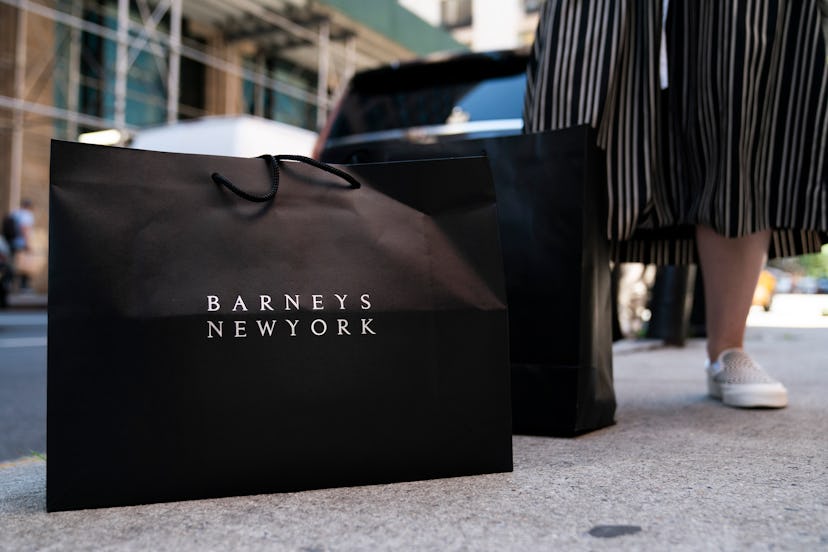Why the Barneys New York Sale Is Barely a Sale at All

Barneys New York—which filed for bankruptcy in August—may have finally been sold, but by no means is the saga over yet. Shoppers have ridden a rollercoaster of emotions since news of the $271 million deal broke on Friday, with mourning almost immediately giving way to joy upon the realization that the department store’s new owners were seemingly about liquidate $500 million worth of designer wares.
And yet, that jubilation has already turned to frustration and anger for visitors who’ve flocked to the store’s seven outposts, which are now papered with slogans like “Everything must be sold!” and “Goodbuys, then goodbye!”
Apparently, they’re merely for decoration, because the average discount is clocking in at a whopping five percent.
Thanks to the New York Times, which dropped by the Barneys Madison Avenue flagship on Tuesday, you don’t have to do the math: A Chloé bag that’s usually $1,690, for example, is currently only $85 off. And an Altuzarra sweater that was originally $695 is now $625.50—a (random?) $69.50 less.
These minimal and somewhat undefined reductions—why not an even $70?—have baffled shoppers and Barneys employees alike. But at least they’re something: A $30,000 leather Fendi bag, on the other hand, is still going to cost you $30,000. The prices of Fendi products—not to mention those of Givenchy, Celine, Louis Vuitton, and Marc Jacobs—haven’t changed, at all.
As it turns out, the process of arriving at a figure is much, much more complicated than stamping it on a price tag. Even the “president of retail solutions” at B. Riley, the group handling the sale, can’t seem to figure it out.
While he promised the Times that prices will continue to lower until the sale is over—ostensibly December, though they’re also prepared to extend it to February—the details he offered on how liquidation specialists have arrived at such enigmatic discounts were vague at best.
Apparently, it all boils down to “a somewhat mathematical, somewhat artful formula,” which takes into account an item’s “sense of desirability.” It’s new territory for B. Riley, which readily acknowledged that this approach is a far cry from that of its past liquidations like Payless and Toys “R” Us.
B. Riley has taken control of Barneys’s assets, but not the entirety of the company. As part of the $271 million deal finalized last week, the licensing firm Authentic Brands Group now owns Barneys’s intellectual property. It plans to license the Barneys name to the store’s longtime rival, Saks, and has also floated the idea of opening new stores named Barneys in the future.
Those plans, apparently, have had absolutely zero impact on those of B. Riley, which also promised the Times that it will “sell every stitch of product” in the current Barneys universe. (Except to the brands who’ve been trying to buy their goods back.)
As for houses like Celine and Fendi, it’s refreshingly straightforward: Each and every brand under the purview of LVMH Moët Hennessy Louis Vuitton—the world’s largest luxury conglomerate—managed to sit out the sale entirely. Though if it so chooses, it can also pull its merchandise at any point. Perhaps that’s in part why B. Riley and Authentic Brands Group have since struck an agreement of their own: to use the term “store closing sales,” instead of the slightly less refined “going out of business.”
Related: Barneys New York Stores Are Officially Set to Close